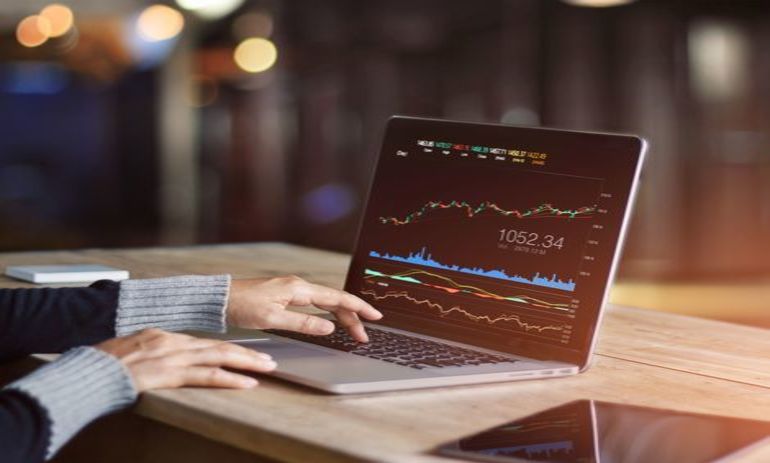Is Forex investment worth considering ? 25-10-2019 11:32am

Get in Touch With Us
As the world is becoming smaller place because of advancement in transportation , its very common that people travel from one country to other country for various reasons. As a global traveler, did you ever find problem in converting domestic currency to currency of foreign country at best price? Answer will be yes because of the wide spread between bid (rate at you sell) and ask rate( rate at you buy) of foreign exchange dealers. INR has been in depreciation mode (value erosion) against major global currencies like US Dollar, British Pound, Euro, Swiss Franc etc. You might have wondered that what if I include currency as an investment in my financial assets portfolio as exchange rate against global currency is continuously increasing (value of local currency is depreciating) . Currency has also become a financial investment to generate returns and diversify risk. Foreign exchange market is the worldís biggest and most liquid market with over $4 trillion per day volume. Opportunities are unlimited considering various global currencies, different economic growth cycle of countries, 24 hours market, fluctuation in currency value, different interest rates etc. There are lot of questions which will come to an investor/ traderís mind when he/she first thinks of moving hard earn money in forex market.How can I trade in forex market ? What is the way to capitalise on these opportunities ? How much should I set aside to invest/ trade in Forex market ? Should I be a trader/investor ? Is my money safe by investing in other currency ? Which are the most liquid forex pairs ? A novice should first start with whether he/she should consider to invest or not which depends upon his/her risk appetite, time horizon, value of total investment, knowledge to invest/trade etc. Forex is a volatile market which requires patience and capacity to take risk, knowledge of forex pairs to be traded, fundamental & technical knowledge etc. As currency fluctuation impacts economy of respective country, so probability of depreciation/appreciation in value by say more than 30% is low but it is still there. Central banks and government start intervening in direct or indirect way to stabilise value of domestic currency in order to safeguard interest of importers, exporters and general public. Normally, investors can keep 5-10% of total investible amount for forex trading. Now question comes about the safety of investment in forex market. In India, RBI does not allow to trade forex on global platforms. So, itís risky to put money with any forex broker who doesnít have office and regulatory permission to operate in India. NSE,BSE and MSX are the exchanges which allow you to invest in exchange traded currency derivatives (ETCD). Any reputed broker, which is member of these exchanges, should be the first choice when investor decides to diversify portfolio in forex. Lot of discount brokerages are also operating for those traders who donít want trading and research support. ETCD are future and option instruments that allow to trade currency in contracts of fixed size and expiry with a small amount of margin (3-8% of contract value). Contracts upto 12 months of expiry are available but liquidity is normally found in contract upto 3-4 months. 4 domestic forex pairs (USDINR, GBPINR, EURINR, JPYINR) and 3 cross currency pairs (EURUSD, GBPUSD, USDJPY) are available to trade. Margin in INR terms range from Rs 2200-5000 per contract. For example, you can buy 1 lot of USDINR (1000 US dollars) at normal margin of 3% which comes to Rs 2160 (1000*72*3%). Apart from these, you will have to provide for the difference (mark to market) in market price and buy rate, only if it goes down below your buy rate. Market timing for domestic currency and cross currency is 9am -5pm and 9 am -7.30 p.m. respectively. Domestic currency and global currency pairs move by minimum 0.0025 paise and 0.0001 per tick respectively. To be a trader or an investor is purely dependent upon your view of market and risk taking capacity. If you have long term view but doesnít have capacity to take big risk or provide for margin in times of adverse market condition, then itís better to be a day trader. US Dollar rate fluctuates by 10 paise- 40 paise on a normal day out of which 2-2.5 paise can go as cost to execute trade. If trader nets minimum 7.5 paise or Rs 75 per contract in a day, then itís a good return on investment capital of Rs. 2200. In other currencies like GBPINR or EURINR, price fluctuation on a normal day ranges from 40 paise Ė Rs 1.2. USDINR is the most liquid pair followed by EURINR & GBPINR.
Letís come to the real market situation. A trader has bought 1 lot of crudeoil at 4000/barrel , anticipating that it will go to 4050. On NYMEX, price moved from $ 56.33 to $57.04 and INR in India appreciated from 71 to 70.70 against USD. It resulted in price moving from 4000 (56.33*71) to 4033 (57.04*70.70). Had it been the same US dollar rate then it would have been 4050 at $57.04 rate. Trader could have simultaneously shorted 56.33 USDINR at 71 and covered at 70.70 to cover Rs 17 difference from forex market. Itís a hedge against fluctuation in USDINR price. Now consider a trader with view to short Nifty as she expects FPI to withdraw money from Indian market because of unstable income tax policy. She can also buy USDINR future as FPI will sell shares to release INR and ask for USD to repatriate money to their destination of origin. Increased USD demand will lead to surge in price of USDINR contract. These are the basic investment logic which investor can apply as and when opportunity arises in forex trading. We will cover factors which need to be considered to form a view on particular currency in our next article. Stay tuned.
